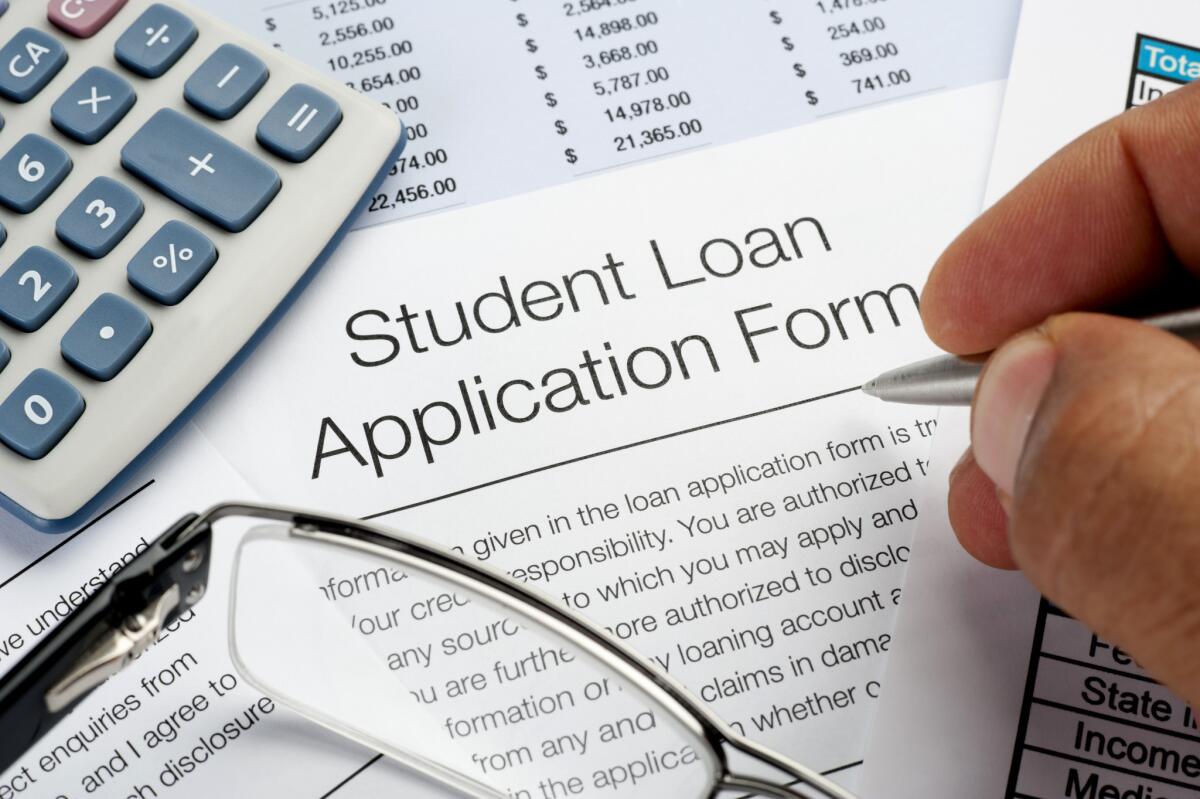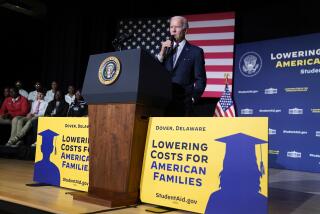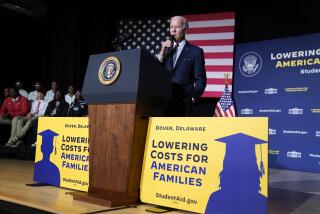Op-Ed: Raise the cap on federal student loans

The most-discussed problem with federal student loans is that some people borrow more than they ultimately can repay. The Obama administration is trying to fix that.
Another problem, paradoxically, is that students cannot borrow enough.
To understand how this is a problem, remember that the federal government is not the only supplier of student loans. Banks and other lenders offer so-called private loans, which often have higher interest rates and less flexible repayment terms.
Last month, for instance, the Education Department announced it will expand the reach of the Pay As You Earn repayment plans for federal student loans. These limit monthly payments to 10% to 15% of a borrower’s discretionary income (defined as income exceeding 150% of the poverty line), with any remaining balance forgiven after 10, 20 or 25 years, depending on the specific plan and the borrower’s career. These terms are already available for new federal loans, and the changed rules would offer similar benefits to 6 million borrowers who owe on older federal loans.
But no such deal applies to private student loans.
Why then do some students still take out private loans? Because the typical dependent undergraduate student cannot borrow more than $27,000 from the federal government to pay for four years of college (and $31,000 at the most even if it takes more than four years to graduate). But going to college often costs much more than that.
On average, in-state tuition, fees, room and board for one year at a public university added up to $12,830 in 2014-15, and that’s after taking into account all grant aid. Not surprisingly, at private, nonprofit colleges, the cost is almost double that.
So a student who maxes out her Education Department loans may still need to borrow more. Poorly informed students may turn to private loans even before using up all the federal credit available to them. The average borrower in the class of 2013 had more than $28,000 in student debt at graduation; by some reports, the average borrower in the the class of 2015 had more than $35,000. These amounts already exceed the federal loan cap, and they’re only going up.
Private student loans are usually much more costly for students; a government report from 2012 found interest rates in excess of 16%, and nothing has improved since then. By contrast, the rate on the most widely used federal student loan currently is 4.29%.
Private loans accounted for a quarter of all student lending in 2007-08 before falling sharply in the wake of the financial crisis. But because federal loan caps have not budged even as tuition has increased, private lending is rising again, and made up about 9% of new debt in 2013-14.
With all of the national hand-wringing about high levels of student debt, why would we advocate offering bigger federal loans? Because that borrowing is going to happen in some form anyway. This is not about whether college is a good investment (although it is), it is about whether students should be forced to take out loans that put them at greater risk of repayment difficulty and possible default.
A world with less federal lending is not one where tuition is forced down — we know because it hasn’t been — but it is one where students (or their parents) must take on a worse kind of debt.
We are calling for more of that student debt to be public, not private. Pay As You Earn restores some of the commitment in 50-year-old student aid legislation that sought to put college within reach for all students, regardless of their income. If grants aren’t enough to cover the cost of college, at least basing repayment on borrowers’ actual income seems fair and progressive: earn more, pay more; earn less, pay less.
Our system of higher education is the best in the world and still a great value, but in recent decades students have had to bear a greater share of the costs. As tuition continues to rise and students continue to need to borrow, we must expand federal lending so that private loans do not spawn a nightmare for those pursuing the American dream.
John R. Brooks is an associate professor of Law at Georgetown University. Jonathan D. Glater is an assistant professor of law at UC Irvine.
Follow the Opinion section on Twitter @latimesopinion and Facebook
More to Read
A cure for the common opinion
Get thought-provoking perspectives with our weekly newsletter.
You may occasionally receive promotional content from the Los Angeles Times.










